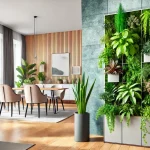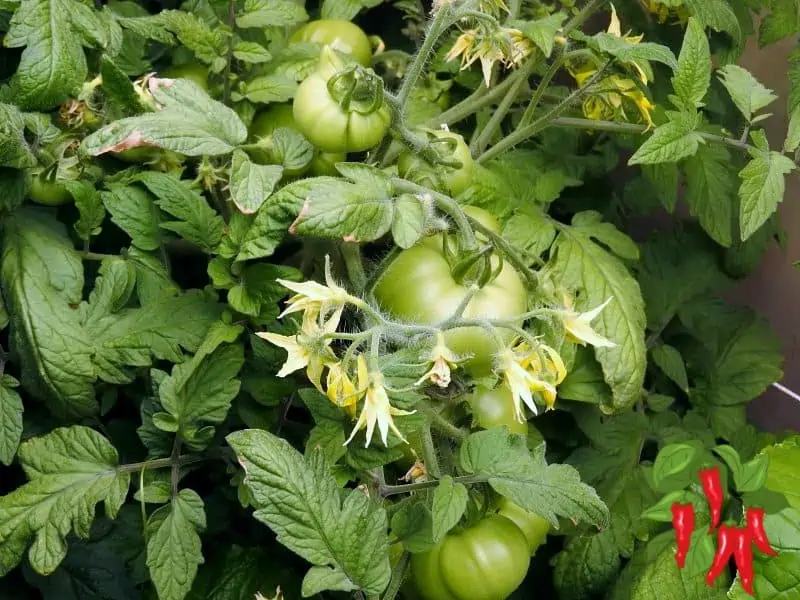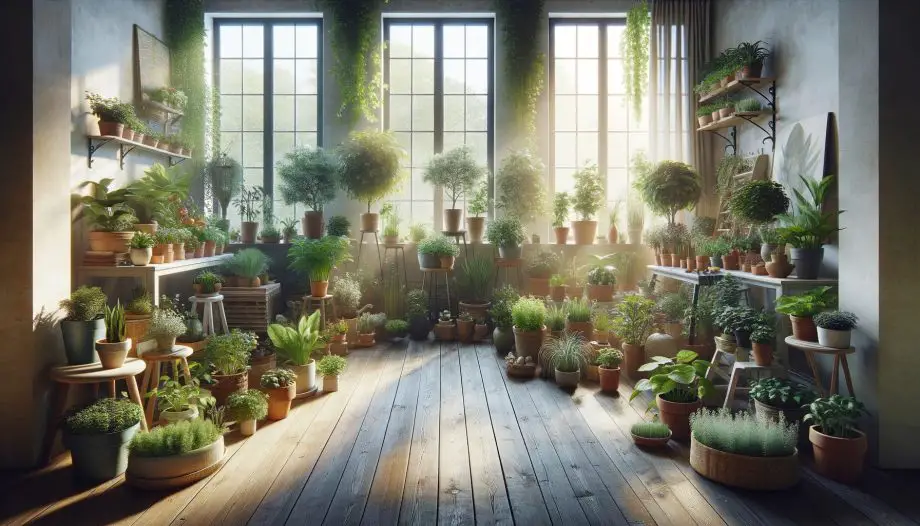This post may contain affiliate links. If you buy something from one of our links we may earn a commission. Thanks
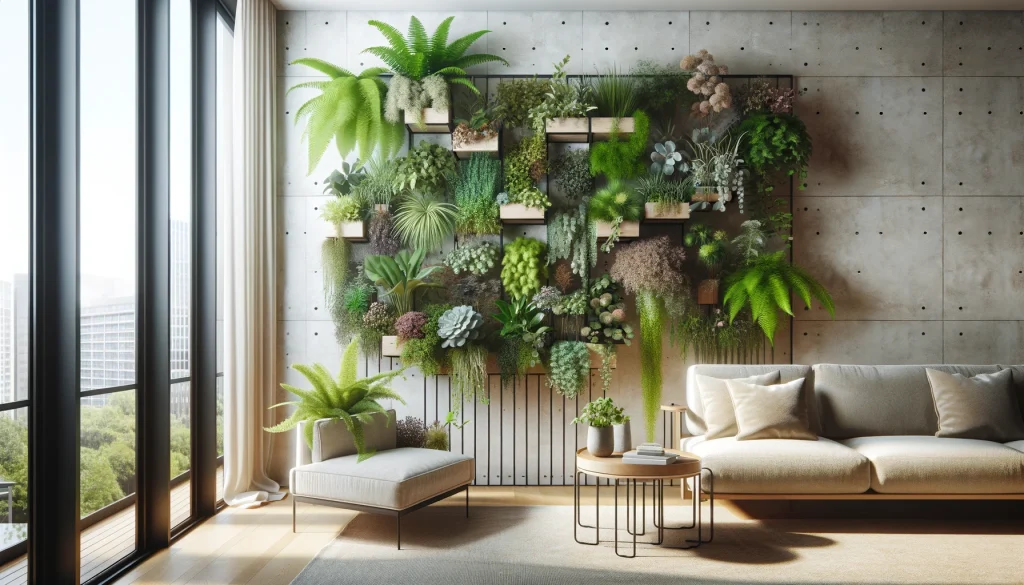
Howdy, green thumbs and urban dwellers! Ever felt like you’re missing out on the joys of gardening because of your cramped apartment space?
Well, I’ve got some great news for you – vertical apartment gardening is here to turn that frown upside down!
This gardening style is all about growing up, not out, making it a perfect match for those of us with more walls than yards.
Key Takeaways:
- Vertical Apartment Gardening Benefits include space-saving, aesthetic appeal, improved air quality, and easier maintenance.
- By utilizing vertical space, apartment dwellers can enjoy lush gardens without sacrificing floor space, creating a beautiful and healthy living environment.
Introduction: Vertical Apartment Gardening Benefits
Welcome to the green revolution! Vertical Apartment Gardening Benefits are transforming urban living spaces into lush, vibrant havens.
Whether you’re a seasoned gardener or a green-thumb newbie, vertical gardening offers a unique way to bring nature into your home, save space, and enhance your well-being.
Let’s dive into the world of vertical gardens and discover how you can turn your apartment into a vertical paradise!
Maximizing Space and Style
Vertical gardening is a game-changer for apartment residents. It’s like a green revolution in compact living, transforming your walls into lush, vibrant gardens.
Imagine having your own little slice of nature right in your living room, kitchen, or balcony – it’s not just possible, it’s pretty easy too!
Practical Perks of Going Vertical
But why go vertical? For starters, it’s a fantastic way to save space.
Instead of pots and planters sprawling across your precious floor area, they stack up, giving you more room to move and groove.
Plus, it adds a dash of visual appeal to your home, turning bland walls into eye-catching displays of greenery.
A Breath of Fresh Air
And let’s not forget the practical perks! Vertical gardens can improve air circulation, reduce noise pollution, and even help with thermal insulation.
They’re like natural air purifiers and sound barriers rolled into one stylish package.
So, if you’re looking to add some green to your urban scene, stick around as we dive deeper into the benefits of vertical apartment gardening.
Trust me, it’s going to be a breath of fresh air!
Why Choose Vertical Gardening for Your Apartment?
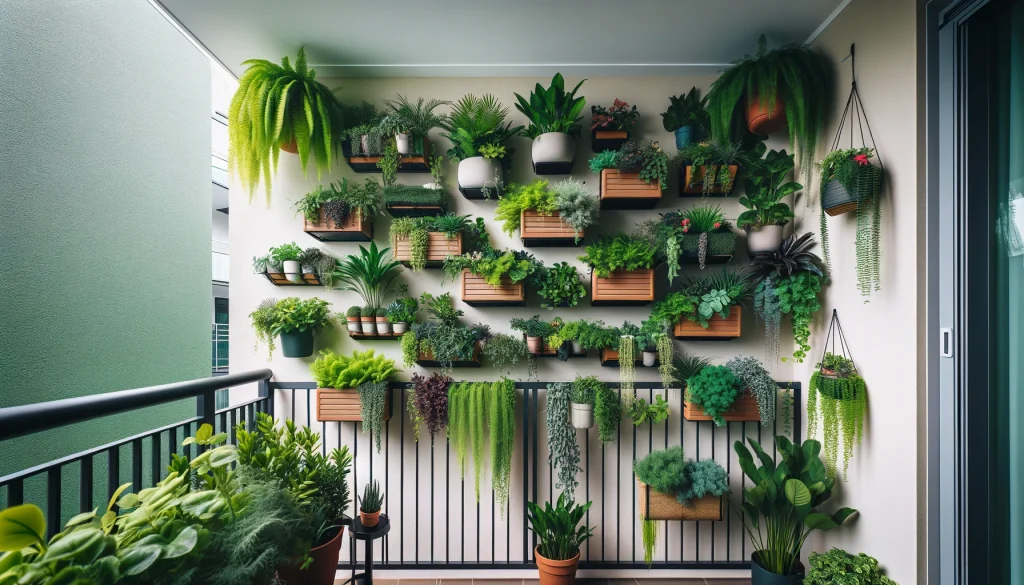
Transform your apartment or balcony into a green oasis with vertical gardening! Discover the benefits that make this gardening style a top choice for urban dwellers.
- Space-Saving Wonders
- Utilize vertical space to grow plants without sacrificing precious floor area.
- Perfect for small apartments where every inch counts.
- Beautify Your Space
- Turn bland walls into stunning displays of greenery.
- Enhance the overall aesthetic of your living space with vibrant plant arrangements.
- Improved Air Quality
- Plants act as natural air purifiers, absorbing toxins and releasing clean oxygen.
- Breathe easier and enjoy a healthier indoor environment.
- Accessibility
- Vertical gardens are easier to maintain and harvest than traditional gardens.
- Say goodbye to back-breaking gardening tasks and enjoy convenient access to your plants.
Types of Vertical Gardens for Apartments
Exploring the different types of vertical gardens can help you find the perfect fit for your apartment’s style and space. Let’s dive into the options!
Wall-Mounted Planters
- Turn your walls into living art with wall-mounted planters or hanging baskets.
- Ideal for adding greenery to small spaces without taking up floor space.
Freestanding Vertical Towers
For those who have a bit more room, freestanding vertical towers are a great choice.
- These tiered plant stands or garden towers can house a variety of plants in a compact design.
- Perfect for creating a green corner in your apartment.
Vertical Garden Kits
- Looking for a hassle-free option? Vertical garden kits might be your answer.
- These pre-made kits come with everything you need for easy installation and maintenance.
DIY Vertical Gardens
-
- Feeling crafty? DIY vertical gardens allow you to get creative with repurposed materials.
- Create a unique garden that reflects your personal style and upcycles materials that might otherwise go to waste.
Choosing the Right Plants for Your Vertical Apartment Garden
Picking the right plants is key to a thriving vertical garden. Let’s explore what to consider and some top plant picks.
Considerations for Selecting Plants
- Light Requirements: Check how much natural light your space gets and choose plants that match those conditions.
- Watering Needs: Consider how often you can water your plants and pick ones with similar hydration needs.
- Growth Habits: Think about how your plants grow. Some might spread out, while others stay compact.
Recommended Plants for Vertical Gardens
- Herbs: Great for culinary use and usually easy to care for. Think basil, mint, or rosemary.
- Succulents: Low-maintenance and perfect for adding texture. Try varieties like echeveria or sedum.
- Ferns: Ideal for adding lush greenery to shadier spots.
- Small Vegetables: Grow your own veggies in limited space! Cherry tomatoes, lettuce, and spinach are good options.
Tips for Arranging Plants
Creating a visually appealing and functional layout is crucial:
- Mix different textures and colors for visual interest.
- Place taller plants at the top and trailing ones at the bottom.
- Consider the mature size of each plant to avoid overcrowding.
Setting Up Your Vertical Garden
Ready to get your vertical garden up and running? Follow this step-by-step guide and keep in mind the necessary materials and tools for a smooth setup.
Step-by-Step Guide to Installing Your Vertical Garden
- Choose Your Location: Pick a spot in your apartment that gets the right amount of light for your chosen plants. If lighting is scarce consider using LED grow lights.
- Select Your Vertical Garden Structure: Decide between wall-mounted planters, freestanding towers, garden kits, or a DIY setup.
- Gather Materials and Tools: Make sure you have all the necessary items, such as planters, soil, plants, mounting hardware, and any specific tools required for assembly.
- Install the Structure: Follow the instructions for your chosen garden structure. For wall-mounted options, ensure it’s securely attached to the wall.
- Plant Your Greens: Fill the planters with soil and plant your chosen greens. Make sure each plant has enough space to grow.
- Water and Care for Your Garden: Give your plants a good initial watering and continue to care for them according to their needs.
Necessary Materials and Tools
- Vertical garden structure (planters, towers, or kits)
- Potting soil or a suitable growing medium like coco coir
- Plants or seeds
- Watering can or system
- Mounting hardware (for wall-mounted options)
- Tools for assembly (screwdriver, drill, etc.)
Tips for Maximizing Space and Ensuring Proper Plant Growth
- Utilize vertical space by stacking planters or using hanging options.
- Choose plants with varying heights and growth habits for a dynamic garden.
- Rotate your garden occasionally to ensure even light exposure.
- Monitor your plants regularly for signs of overcrowding or nutrient deficiencies and adjust as needed.
Pro tip:
Coco coir is a fantastic grow medium. It offers a neutral pH and excellent drainage and aeration for plant roots. You can mix it with 25% perlite or use straight.
Coco coir has few nutrients so adding worm castings, compost, or regular fertilizing is needed.
It weighs less than potting soil and it also allows you to reduce pot size by 1/3 over pots using potting soil
With these steps and tips, you’ll be well on your way to enjoying a lush vertical garden in your apartment.
Maintaining Your Vertical Garden

Keeping your vertical garden healthy and vibrant requires some regular TLC. Here’s how to ensure your green wall stays in top shape.
Watering Your Vertical Garden
- Efficient Watering: Use a watering can with a long spout or a drip irrigation system for targeted watering.
- Check Moisture Levels: Stick your finger about an inch into the soil. If it feels dry, it’s time to water.
- Avoid Overwatering: Be careful not to overwater, as this can lead to root rot. Ensure your vertical garden has proper drainage.
Fertilizing Your Plants
- Right Fertilizer: Choose a fertilizer that matches the needs of your plants. Liquid fertilizers are often easier to apply in vertical gardens.
- Follow a Schedule: Fertilize your plants according to the recommended schedule, usually every 2-4 weeks during the growing season.
- Observe Your Plants: Look out for signs of nutrient deficiency, such as yellowing leaves or stunted growth, and adjust your fertilizing routine as needed.
Managing Pests and Diseases
- Regular Inspections: Keep an eye on your plants for any signs of pests or disease.
- Natural Solutions: Use natural remedies like neem oil or insecticidal soap to tackle pests without harming beneficial insects.
- Isolate Affected Plants: If you notice any diseased plants, isolate them to prevent the spread to healthy ones.
- Maintain Good Air Circulation: Ensure your vertical garden has good airflow to reduce the risk of fungal diseases.
By following these maintenance tips, you can keep your vertical garden thriving and enjoy a bountiful harvest of fresh greens.
Incorporating Vertical Gardens into Apartment Decor
Alright, let’s talk about turning your vertical garden into a stylish part of your apartment decor.
It’s not just about the greens; it’s about making your space look and feel amazing!
Blending Green with Your Scene
- Match Your Style: Whether you’re all about modern chic or boho vibes, choose a vertical garden setup that complements your decor.
- Color Coordination: Pick plants with colors that vibe well with your room’s palette. A pop of green always adds a fresh touch, but don’t be afraid to mix in some flowering plants for a splash of color.
Using Vertical Gardens as Room Dividers or Focal Points
- Divide and Conquer: Need to section off your studio or create a cozy nook? A vertical garden can be a functional and beautiful room divider.
- Spotlight on Green: Make your vertical garden the star of the show by placing it in a central location or using it as a stunning backdrop for your Instagram-worthy moments.
Vertical Apartment Gardening FAQs
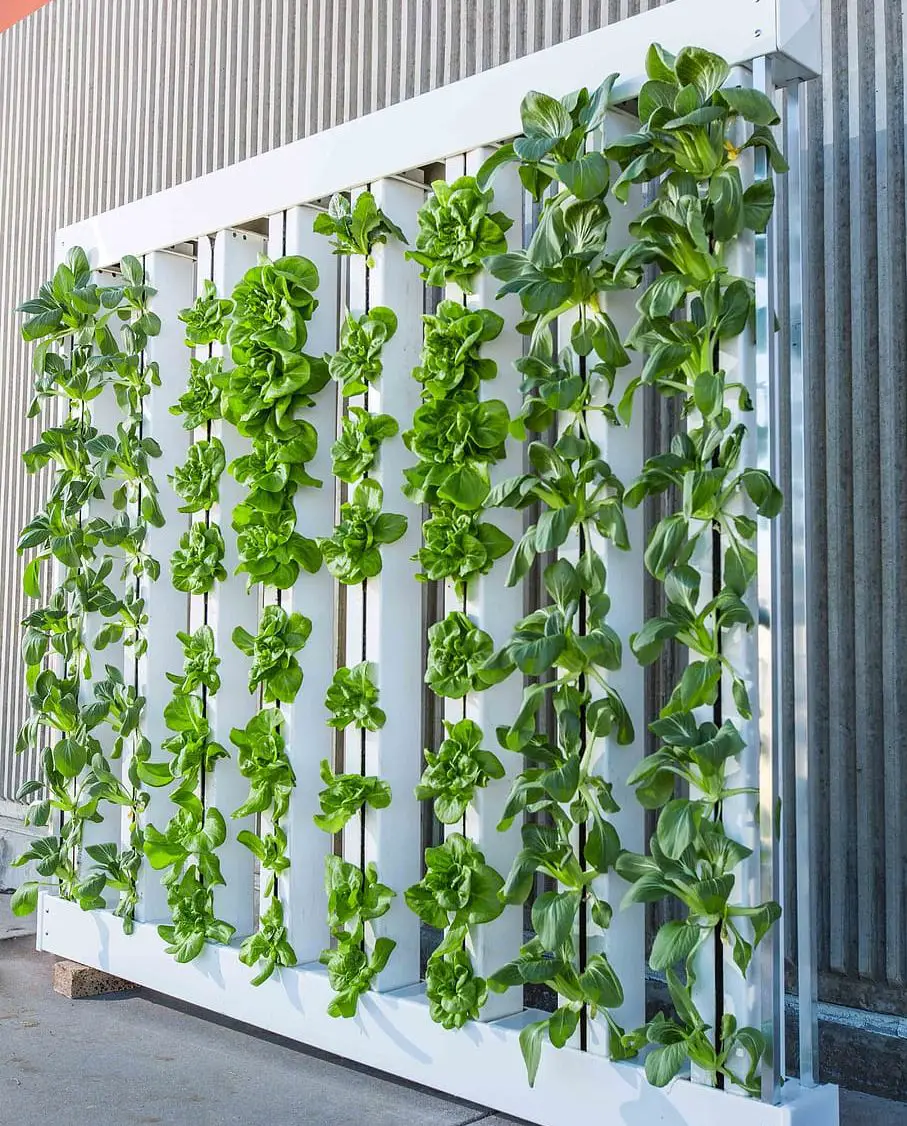
Got questions about vertical gardening? You’re in the right place! Let’s tackle some common queries to help you get your vertical garden growing.
Q. What plants can I grow in a vertical garden?
A. You can grow a variety of plants in a vertical garden. Consider adding succulents, houseplants and flowers to your garden. Fore vegetables include tomatoes, peppers, bush beans, peas, and radishes.
Q. What are the advantages of vertical gardening?
A. Vertical gardens reduce your carbon footprint by filtering pollutants and carbon dioxide, improving air quality and offering a lush pop of nature in homes and business environments.
Q. How do I make a vertical garden?
A. To start a vertical garden, choose a wall, build a frame, attach plastic sheeting and fabric to walls, set up an irrigation system, choose your plants, and insert them into the structure.
Q. Are vertical gardens the simplest method to grow plants?
A. Vertical gardens offer increased yields and easier maintenance, making them a great option for efficient gardening.
Q. Do vertical gardens work?
A. Yes, vertical gardens are effective in utilizing space and can provide a stunning and productive gardening solution.
Q. Can I grow carrots in a vertical garden?
A. Yes, you can grow a variety of root vegetables, including carrots, in a vertical garden. Make sure your container is 12 inches deep for carrots.
Q. What are the advantages and disadvantages of vertical gardening?
A. Vertical gardens save space, offer mobility and improve your home. However, they may require additional maintenance and expenses.
Q. Are vertical gardens better?
A. Vertical gardens are better for increasing airflow, protecting plants from pests and diseases, and providing physical ease for gardeners.
Q. Are vertical gardens easy to maintain?
A. Generally, vertical gardens are easier to maintain than traditional gardens, requiring less physical effort and time devoted to pest and disease control.
Q. Can I grow vegetables in a vertical garden?
A. Yes, vegetables like tomatoes, cucumbers, melons, squash, and beans are great for vertical gardening. Look for compact varieties to save garden space.
Visit my Amazon Influencer Page for videos and gardening products Grow Your Own Garden










